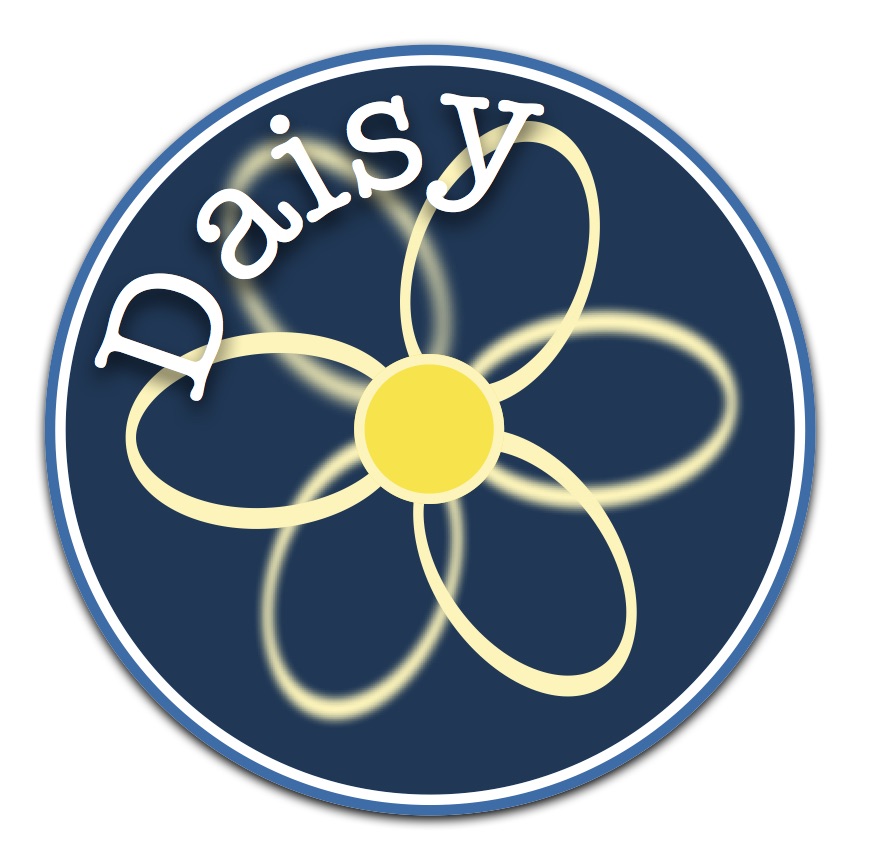Project Daisy

News
-
The 'ds2l' branch has the code corresponding to the SAS'23 paper "Scaling up Roundoff Analysis of Functional Data Structure Programs"!
-
The 'regimes' branch has the code corresponding to the EMSOFT'21 paper "Regime Inference for Sound Floating-Point Optimizations"!
-
The 'approx' branch is merged into master! You can now approximate transcendental functions in fixed-point arithmetic code. Check out the script
scripts/optimization_approx_fixed.shfor the correct command-line options. -
Updated to Scala 2.13!
-
Roundoff error evaluation now available using interval and affine arithmetic with MPFR bounds with
--errorMethod=intervalMPFRor--errorMethod=affineMPFR! The error bounds are sound (and slightly less tight), but the computation is faster for longer benchmarks. -
Daisy now has documentation!
-
Mixed-precision tuning is now available through the
--mixed-tuningflag! -
Polynomial approximation of floating-point elementary functions is available through the
--metalibm --codegen --lang=Cflags! Check out the scriptscripts/optimization_metalibm.shfor the correct command-line options.
First steps
Note you need to have at most Java 8.
Daisy is set up to work with the simple build tool (sbt). Once you have sbt, type in daisy's home directory:
$ sbtThis will run sbt in interactive mode. Note, if you run sbt for the first time, this operation may take a substantial amount of time (heaven knows why). SBT helpfully prints what it is doing in the process. If you feel like nothing has happened for an unreasonable amount of time, abort and retry. This usually fixes the problem, otherwise try the old trick: restart.
To compile daisy:
> compileTo Daisy run an example:
> run testcases/rosa/Doppler.scalaNote that Daisy currently supports only one input file at a time. The above command should produce an output such as (your own timing information will naturally vary):
Extracting program
[ Info ]
[ Info ] Starting specs preprocessing phase
[ Info ] Finished specs preprocessing phase
[ Info ]
[ Info ]
[ Info ] Starting range-error phase
[ Info ] Finished range-error phase
[ Info ]
[ Info ] Starting info phase
[ Info ] doppler
[ Info ] error: 4.1911988101104756e-13, range: [-158.7191444098274, -0.02944244059231351]
[ Info ] Finished info phase
[ Info ] time:
[ Info ] info: 6 ms, rangeError: 360 ms, analysis: 6 ms, frontend: 2902 ms,To see all command-line options:
> run --helpThe /scripts folder contains a number of example scripts and command-line flag combinations.
If you don't want to run in interactive mode, you can also call all of the above commands simply with 'sbt' prefixed, e.g.
$ sbt compileYou can also run Daisy outside of sbt. For this use
$ sbt scriptwhich will generate a script called 'daisy' which includes all the necessary files. You can then run Daisy on an input file as follows:
$ ./daisy testcases/rosa/Doppler.scalaAdditional Software
Some features of Daisy require additional software to be installed. Currently, this is
-
An SMT solver which can be used to improve ranges: Z3 and/or dReal
-
MPFR for fast analysis, transcendental calculations and error under-approximation: [
apt-get install libmpfr4] [brew install mpfr]. (On macOS, if the library installed is not libmpfr.4.dylib, you may have to recompile the Java bindings and place them in lib/. On Linux, you can also download libmpfr.so.4 and install it manually with dpkg -i.) -
Metalibm and all additional dependencies:
-
Install/update dependencies (e.g. on Mac with Homebrew): mpfr, mpfi, fplll, automake, libtool, flex, bison, boost
-
Install Sollya (outside of Daisy home directory, known working commit ad49ac94b6d6632fd9076e7c618d830eeeca6d86)
git clone https://gitlab.inria.fr/sollya/sollya.git cd sollya ./autogen.sh ./configure make make install -
Install Gappa (outside of Daisy home directory, known working commit b0d769e66dc907924c09f5b45970fd7059a1e03d)
git clone https://gitlab.inria.fr/gappa/gappa.git cd gappa ./autogen.sh ./configure ./remake ./remake install -
add Sollya and Gappa to your PATH
-
Setup Metalibm (provided as a submodule)
git submodule init git submodule update cd metalibm-for-daisy; make
-
Contributors
In no particular order: Saksham Sharma, Einar Horn, Debasmita Lohar, Heiko Becker, Ezequiel Postan, Fabian Ritter, Anastasiia Izycheva, Raphael Monat, Fariha Nasir, Robert Bastian, Anastasia Volkova, Ramya Bankanal, Robert Rabe, Joachim Bard, Arpit Gupta.
Intellij Idea Setup
To run Daisy in Intellij Idea you first have to install the Scala Plugin: Settings (Ctrl + Alt + S) -> Plugins. Choose Scala in the list and select "Install JetBrains Plugin ...". Then let Idea know where is your Scala (or make sure Scala SDK is already there): Project Structure -> Global Libraries -> New Global Library -> Scala SDK -> select the source folder for the SDK on your machine. Also make sure the Java SDK is set up for Idea (Project Structure -> SDKs -> check that your JDK is here or add it here).
Choose File -> New -> Project from Existing Source -> path-to-the-build.sbt-file or File -> New -> Project from Version Control -> Git -> and put git-rts@gitlab.mpi-sws.org:AVA/daisy.git into the URL field and select the destination folder for source files to be copied.
After the setup run Daisy in the Terminal of Intellij Idea using sbt as described above.
Acknowledgements
A big portion of the infrastructure has been inspired by and sometimes directly taken from the Leon project (see the LEON_LICENSE).
Especially the files in frontend, lang, solvers and utils bear more than a passing resemblance to Leon's code. Leon version used: 978a08cab28d3aa6414a47997dde5d64b942cd3e